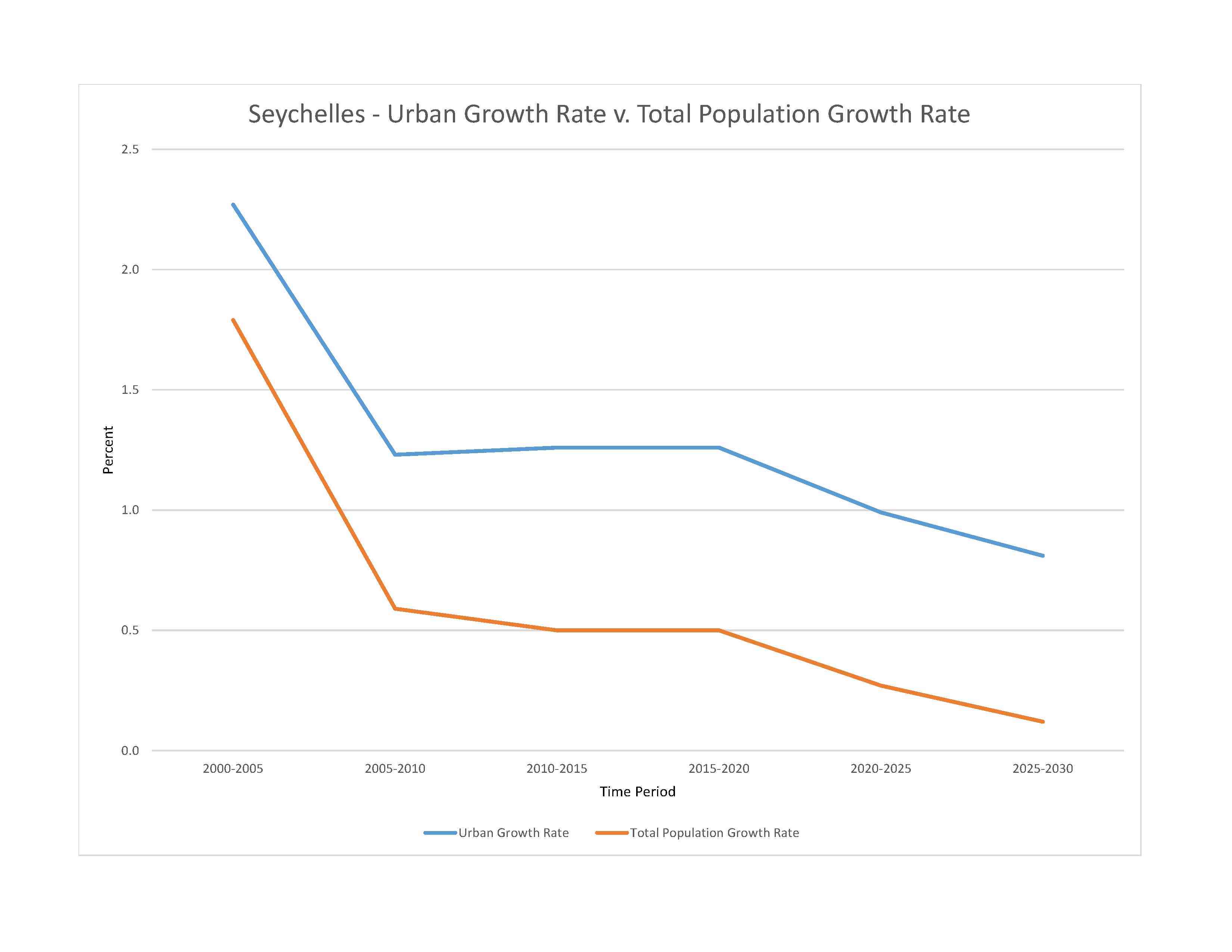
97,617 (2023 est.)
noun: Seychellois (singular and plural)
adjective: Seychellois
predominantly Creole (mainly of East African and Malagasy heritage); also French, Indian, Chinese, and Arab populations
Seychellois Creole (official) 89.1%, English (official) 5.1%, French (official) 0.7%, other 3.8%, unspecified 1.4% (2010 est.)
Roman Catholic 76.2%, Protestant 10.5% (Anglican 6.1%, Pentecostal Assembly 1.5%, Seventh Day Adventist 1.2%, other Protestant 1.7%), other Christian 2.4%, Hindu 2.4%, Muslim 1.6%, other non-Christian 1.1%, unspecified 4.8%, none 0.9% (2010 est.)
Seychelles has no indigenous population and was first permanently settled by a small group of French planters, African slaves, and South Indians in 1770. Seychelles’ modern population is composed of the descendants of French and later British settlers, Africans, and Indian, Chinese, and Middle Eastern traders and is concentrated on three of its 155 islands – the vast majority on Mahe and lesser numbers on Praslin and La Digue. Seychelles’ population grew rapidly during the second half of the 20th century, largely due to natural increase, but the pace has slowed because of fertility decline. The total fertility rate dropped sharply from 4.0 children per woman in 1980 to 1.9 in 2015, mainly as a result of a family planning program, free education and health care, and increased female labor force participation. Life expectancy has increased steadily, but women on average live 9 years longer than men, a difference that is higher than that typical of developed countries.
The combination of reduced fertility and increased longevity has resulted in an aging population, which will put pressure on the government’s provision of pensions and health care. Seychelles’ sustained investment in social welfare services, such as free primary health care and education up to the post-secondary level, have enabled the country to achieve a high human development index score – among the highest in Africa. Despite some of its health and education indicators being nearly on par with Western countries, Seychelles has a high level of income inequality.
An increasing number of migrant workers – mainly young men – have been coming to Seychelles in recent years to work in the construction and tourism industries. As of 2011, foreign workers made up nearly a quarter of the workforce. Indians are the largest non-Seychellois population – representing half of the country’s foreigners – followed by Malagasy.
0-14 years: 17.95% (male 8,999/female 8,524)
15-64 years: 72.58% (male 37,677/female 33,177)
65 years and over: 9.47% (2023 est.) (male 3,956/female 5,284)
total dependency ratio: 45
youth dependency ratio: 33.6
elderly dependency ratio: 11.4
potential support ratio: 8.7 (2021 est.)
total: 38.2 years (2023 est.)
male: 37.7 years
female: 38.8 years
0.6% (2023 est.)
12.1 births/1,000 population (2023 est.)
6.9 deaths/1,000 population (2023 est.)
0.8 migrant(s)/1,000 population (2023 est.)
more than three-quarters of the population lives on the main island of Mahe; Praslin contains less than 10%; a smaller percent on La Digue and the outer islands as shown in this 
urban population: 58.8% of total population (2023)
rate of urbanization: 0.99% annual rate of change (2020-25 est.)

28,000 VICTORIA (capital) (2018)
at birth: 1.03 male(s)/female
0-14 years: 1.06 male(s)/female
15-64 years: 1.14 male(s)/female
65 years and over: 0.75 male(s)/female
total population: 1.08 male(s)/female (2023 est.)
3 deaths/100,000 live births (2020)
total: 10.4 deaths/1,000 live births (2023 est.)
male: 13.1 deaths/1,000 live births
female: 7.6 deaths/1,000 live births
total population: 76.4 years (2023 est.)
male: 72 years
female: 80.9 years
1.81 children born/woman (2023 est.)
0.89 (2023 est.)
N/A
improved: urban: N/A
rural: N/A
total: 96.2% of population
unimproved: urban: N/A
rural: N/A
total: 3.8% of population (2017 est.)
6.4% of GDP (2020)
2.25 physicians/1,000 population (2019)
3.6 beds/1,000 population (2011)
improved: urban: N/A
rural: N/A
total: 100% of population
unimproved: urban: N/A
rural: N/A
total: 0% of population (2020 est.)
14% (2016)
total: 9.48 liters of pure alcohol (2019 est.)
beer: 4.11 liters of pure alcohol (2019 est.)
wine: 0.49 liters of pure alcohol (2019 est.)
spirits: 4.62 liters of pure alcohol (2019 est.)
other alcohols: 0.25 liters of pure alcohol (2019 est.)
total: 20.2% (2020 est.)
male: 34% (2020 est.)
female: 6.4% (2020 est.)
45% (2023 est.)
5.2% of GDP (2020 est.)
definition: age 15 and over can read and write
total population: 95.9%
male: 95.4%
female: 96.4% (2018)
total: 15 years
male: 13 years
female: 16 years (2021)
NOTE: The information regarding Seychelles on this page is re-published from the 2024 World Fact Book of the United States Central Intelligence Agency and other sources. No claims are made regarding the accuracy of Seychelles 2024 information contained here. All suggestions for corrections of any errors about Seychelles 2024 should be addressed to the CIA or the source cited on each page.
This page was last modified 04 May 24, Copyright © 2024 ITA all rights reserved.